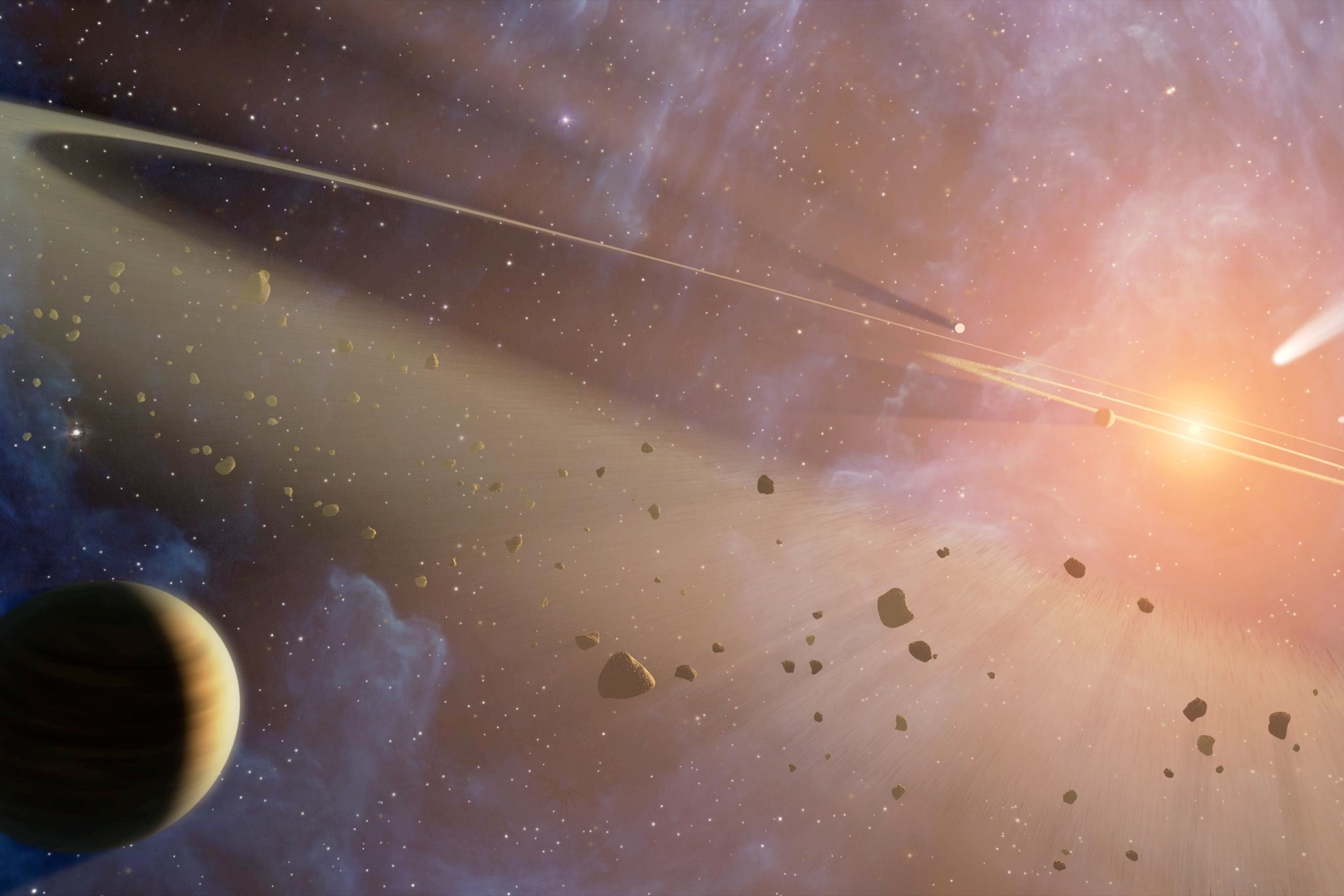Create your own Planetary Systems
Develop an AI algorithm capable of understanding the structure of (exo)planetary systems and generate others.
Context
Present and near-future observational facilities on the ground or in space have the capacity to discover and observe planets like the Earth. One key for such discovery to be possible is to know where to search and to identify stars around which such Earth twins could exist, based, for example, on the properties of other planets (easier to discover) orbiting the same star.
Purpose
The goal of this challenge is to develop an AI algorithm capable of capturing correlations and statistical relationships between planets in the same planetary system. Such an algorithm should be able to generate a large number of unique synthetic planetary systems with little computational cost. These synthetic systems can be used, for example, to guide observational campaigns, as described above.
Current Situation
Numerical calculations of planetary system formation are very demanding in terms of computing power. These synthetic planetary systems can, however, provide access to correlations, as predicted in a given numerical framework, between the properties of planets in the same system. Such correlations can, in return, be used to guide and prioritise observational campaigns aimed at discovering certain types of planets, such as Earth-like planets.
Activities
The main activities include:
- Data Analysis: Play with data composed of planets inside planetary systems generated from numerical simulations (Bern model).
- Model Development: Train an AI model to understand statistical correlations between planets in a planetary system and to generate more.
- Validation: Validate the model's accuracy using the provided (original) dataset.
- Generation: Use the model to generate more planetary systems that can be unique.
- Visualization: Create visualizations to present the findings.
- Reporting: Document the progress, results, and algorithms used.
Resources
Access to AI models and infrastructure will be crucial for executing these activities. This includes:
- Data Sources: provided dataset(s) from mentors of ai4exoplanets group.
- Software: Python libraries for data processing and machine learning (e.g. TensorFlow, PyTorch, Keras…).
Team
The team should include members with expertise in:
- Machine Learning: For developing and validating the AI model.
- Data Scientist: For analysing and getting insights from the provided dataset(s).
Collaboration will be stimulated through:
- Brainstorming Sessions: ai4exoplanets mentors will help guide the participants into innovative ideas.
- Role Play: To ensure each member's skills are utilized effectively.
- Prototyping: To build and test the AI model collaboratively.
Outputs and Outcomes
This project will promote open science by making the AI model, data, and code publicly available. It will also support astrophysics researchers from the insights that the participants can gather from the provided dataset(s). The outcomes will catalyze a larger project by demonstrating the feasibility of using AI for astrophysical applications, potentially having an impact on future space missions.
Data
You can download the data for this challenge here.
Geographic Relevance
Switzerland has a prestigious position in the field of astrophysics, more specifically Exoplanet Science. From discovering the first exoplanet orbiting a Sun-like star, to leading the CHEOPs mission, Swiss universities have been key contributors to advance this field. Using novel technologies like AI only allows it to keep on being in the vanguard of research, having a strategic importance and impact for Swiss society. The insights gained can also be relevant for Europe and the world, promoting similar initiatives in other regions.
Ethics and Regulatory Compliance
Ethical considerations include ensuring data privacy and accuracy. Compliance with legal and regulatory guidelines will be maintained by adhering to data protection laws and obtaining necessary permissions for data use. The project will follow the guidelines outlined in the FAQ of the Swiss {ai} Weeks to ensure ethical norms are upheld.

Fig: Illustration of planet formation around its star (Credit: NASA/JPL-Caltech)
Previous
Hackathon Bern
Next project
